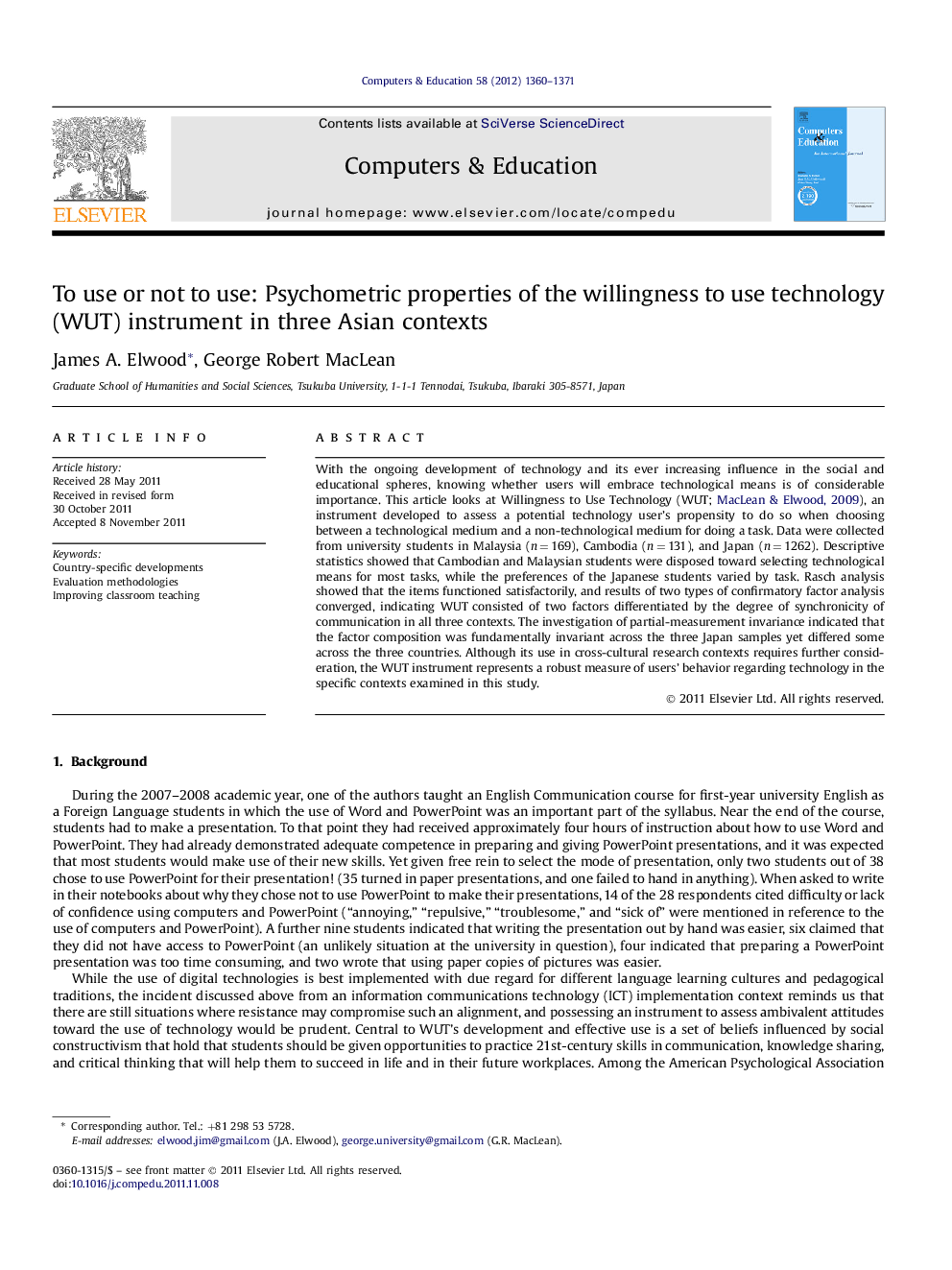| کد مقاله | کد نشریه | سال انتشار | مقاله انگلیسی | نسخه تمام متن |
|---|---|---|---|---|
| 348770 | 618201 | 2012 | 12 صفحه PDF | دانلود رایگان |

With the ongoing development of technology and its ever increasing influence in the social and educational spheres, knowing whether users will embrace technological means is of considerable importance. This article looks at Willingness to Use Technology (WUT; MacLean & Elwood, 2009), an instrument developed to assess a potential technology user’s propensity to do so when choosing between a technological medium and a non-technological medium for doing a task. Data were collected from university students in Malaysia (n = 169), Cambodia (n = 131), and Japan (n = 1262). Descriptive statistics showed that Cambodian and Malaysian students were disposed toward selecting technological means for most tasks, while the preferences of the Japanese students varied by task. Rasch analysis showed that the items functioned satisfactorily, and results of two types of confirmatory factor analysis converged, indicating WUT consisted of two factors differentiated by the degree of synchronicity of communication in all three contexts. The investigation of partial-measurement invariance indicated that the factor composition was fundamentally invariant across the three Japan samples yet differed some across the three countries. Although its use in cross-cultural research contexts requires further consideration, the WUT instrument represents a robust measure of users’ behavior regarding technology in the specific contexts examined in this study.
► The WUT instrument can give a good indication of one’s predisposition toward using technology.
► Technological media were preferred for six of the 11 tasks across all five samples.
► In all five samples, WUT consisted of two dimensions based on the synchronicity of communication.
► The three Japan samples were found to be fundamentally partial-measurement invariant.
► Convergence of the three analyses supported the respective configurations of the WUT instrument.
Journal: Computers & Education - Volume 58, Issue 4, May 2012, Pages 1360–1371